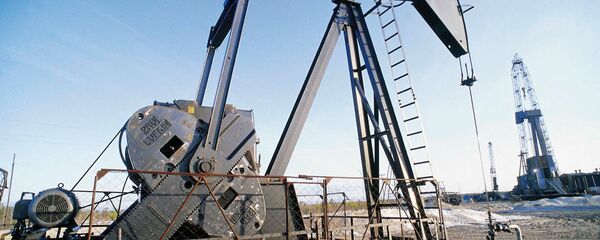Saudi Arabia is selling short again. The national petroleum company Saudi Aramco announced a discount of $0.35 a barrel on July oil futures for north-western Europe and a discount of $0.1 a barrel for the Mediterranean region, according to The Wall Street Journal.
Currently, Saudi Arabia delivers to Europe nearly 800,000 barrels of crude a day while Iran sells 400,000 barrels. However, Tehran expects to increase shipments to 700,000 barrels.
As for the US, Saudi Arabia will increase the price, by $0.1 a barrel.
Saudi Arabia wants to take as much as it can from each regional market, Sergei Agibalov, an analyst at the Energy and Finance Institute, told Gazeta.ru.
On the contrary, in Europe Saudi Arabia competes with Iran and Russia. Recently, Russia began to increase crude shipments to Europe. As a result, Riyadh has had to offer discounts for its oil.
Despite the fact that Saudi crude is considered sweet crude (containing low levels of sulfur) in fact it is rather close to Russian-made Urals crude which is considered sour crude (with higher levels of sulfur), Rusenergy partner Mikhail Krutikhin said.
"This is why in north-western Europe competition may speed up between Saudi and Russian oil," he added.
First of all, local dumping will hit European oil companies in Britain and Norway, Alexander Pasechnik, senior analyst at the National Fund for Energy Security, said. In the short-term perspective, it will not have a significant impact.
"Iran may offer a bigger discount. It has a margin of safety. Previously, Iran gave a discount of $1 a barrel," Pasechnik said.
This is not the first time when Saudi Arabia has decreased the price for its oil. However, in early-March, Riyadh announced a price hike for April crude futures as they expected growing demand. What is more, at the time the price was lower than now ($36-37 a barrel) and was too low even for Saudi Arabia, despite its extremely low production costs.
Saudi Arabia began selling short last year. Riyadh said that low oil prices were expected to push high-cost producers from the market, including US shale companies as well as Russian, Canada and Brazilian firms.
The strategy has had some effect on the US oil producing industry. Last week Baker Hughes reported that the total US rig count had reached 408, four rigs more than the previous week. But the overall number of oil rigs in the US had decreased by over 50 percent within a year.
In April, OPEC held a meeting in Doha with non-OPEC producers, including Russia, with an output freeze was on the agenda. But Saudi Arabia actually hampered the vote. Iran was the first to oppose the move and did not send its representatives to the meeting. In turn, Riyadh said that it would not cap production until other producers did.
Finally, during an OPEC meeting on June 2, members once again failed to agree on a production freeze. Saudi Arabia and Iran now have plans to increase their output and will offer discounts as they struggle for market share.
Pasechnik said that despite the fact that an oil war between Saudi Arabia and Iran continues, oil prices are likely to increase in the global market.
Among the reasons are recent fires in Canadian oil sands, disruptions in oil shipments from Nigeria, and a strike of oil workers in Kuwait. Moreover, demand for crude is growing in China and India.





